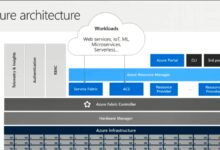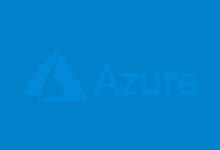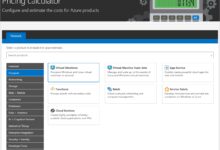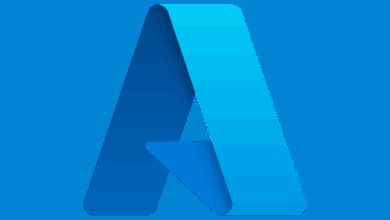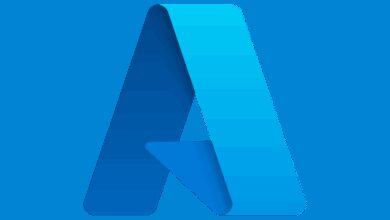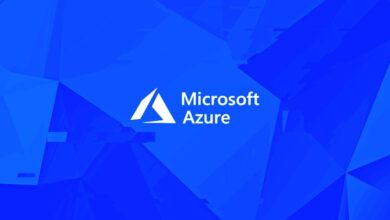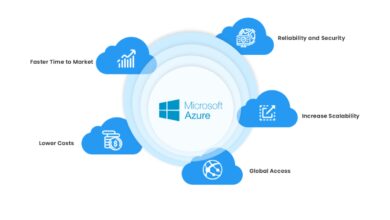Azure Price Cal: 7 Powerful Tips to Master Cloud Cost Management
Managing cloud costs can feel like navigating a maze—especially when you’re dealing with a vast ecosystem like Microsoft Azure. That’s where the Azure Price Cal comes in, a vital tool for forecasting, analyzing, and optimizing your cloud spending with precision and confidence.
Understanding the Azure Price Cal: What It Is and Why It Matters

The term azure price cal refers to the process and tools used to calculate, estimate, and manage the cost of services within the Microsoft Azure cloud platform. While there isn’t a standalone product officially named “Azure Price Cal,” the phrase is widely used to describe the suite of pricing calculators, cost management tools, and forecasting features provided by Microsoft to help users plan and control their cloud expenses.
What Does “Azure Price Cal” Actually Mean?
“Azure price cal” is a colloquial shorthand for the Azure Pricing Calculator and related cost estimation tools. It’s commonly used by IT professionals, cloud architects, and financial decision-makers who need to forecast cloud spend before deployment. The term combines “Azure” (Microsoft’s cloud platform), “price” (cost), and “cal” (short for calculator).
- It’s not an official Microsoft product name but a widely recognized industry term.
- Refers to tools like the Azure Pricing Calculator, Total Cost of Ownership (TCO) Calculator, and Azure Cost Management + Billing.
- Used during the planning phase of cloud migration or new project deployment.
Why Accurate Cost Estimation Is Critical in the Cloud
Unlike traditional on-premises infrastructure, cloud computing operates on a pay-as-you-go model. This flexibility is powerful but can lead to unexpected bills if not managed properly. The azure price cal process helps organizations avoid budget overruns by providing transparent, real-time cost projections.
“Without proper cost visibility, cloud spending can spiral out of control—sometimes doubling or tripling initial estimates.” — Gartner Research, 2023
Key reasons why cost estimation matters:
- Prevents financial surprises and supports accurate budgeting.
- Enables comparison between cloud and on-premises solutions.
- Supports compliance with internal financial controls and governance policies.
- Helps in making informed decisions about resource scaling and service selection.
How the Azure Pricing Calculator Works: A Step-by-Step Guide
The Azure Pricing Calculator is the cornerstone of the azure price cal process. It allows users to build a virtual environment by selecting specific Azure services and viewing real-time cost estimates. Whether you’re planning a simple web app or a complex AI-driven data pipeline, this tool gives you granular control over your forecast.
Accessing the Azure Pricing Calculator
You can access the Azure Pricing Calculator at https://azure.microsoft.com/en-us/pricing/calculator/. No login is required to start building estimates, though saving or sharing your estimates requires a Microsoft account.
- The interface is intuitive and browser-based.
- Available globally with regional pricing options.
- Updated regularly to reflect the latest service pricing and discounts.
Building Your First Cost Estimate
To create an estimate using the azure price cal tool:
- Select the services you plan to use (e.g., Virtual Machines, Blob Storage, Azure Functions).
- Configure each service with your expected usage (e.g., VM size, number of instances, data transfer volume).
- Choose your region, billing model (pay-as-you-go, reserved instances), and any applicable discounts.
- Review the total monthly or hourly cost estimate.
For example, if you’re deploying a web application, you might add:
- 1 x B2s Virtual Machine ($23.14/month)
- 50 GB of Blob Storage ($1.35/month)
- 100 GB of outbound data transfer ($8.50/month)
- Azure App Service (Basic Plan, $52.90/month)
The tool instantly sums these to give a total estimated cost of ~$85.89/month.
Exporting and Sharing Your Estimates
Once your estimate is complete, you can export it as a CSV or PDF file for sharing with stakeholders. This is especially useful for:
- Presenting to finance or procurement teams.
- Documenting cloud migration plans.
- Comparing multiple architecture options side by side.
You can also save your estimate to your Microsoft account and collaborate with team members in real time.
Advanced Features of the Azure Price Cal Tools
Beyond basic cost estimation, the azure price cal ecosystem includes advanced tools that provide deeper insights into long-term spending, reserved capacity, and hybrid scenarios.
Using the Total Cost of Ownership (TCO) Calculator
The Azure TCO Calculator helps organizations compare the cost of running workloads on-premises versus migrating to Azure. It factors in hardware, power, cooling, IT labor, and downtime.
- Input your current server count, storage capacity, and network usage.
- Select migration scope (lift-and-shift, refactored, or cloud-native).
- Receive a detailed report showing potential savings over 3–5 years.
This tool is essential for CIOs and CFOs evaluating the financial impact of cloud adoption.
Leveraging Reserved Instances and Savings Plans
One of the most powerful ways to reduce Azure costs is through Reserved Virtual Machine Instances and Azure Savings Plans. The azure price cal tools allow you to model these commitments and see potential savings of up to 72% compared to pay-as-you-go pricing.
- Reservations require a 1-year or 3-year commitment.
- Savings are applied automatically to matching VM usage.
- The calculator shows break-even points and ROI timelines.
For example, reserving a D4s v3 VM in East US for 3 years can save over $12,000 compared to on-demand pricing.
Multi-Cloud and Hybrid Scenario Modeling
While the azure price cal tools are Azure-centric, they also support hybrid and multi-cloud planning. You can estimate costs for:
- Azure Arc-enabled servers managing on-premises infrastructure.
- Data replication between Azure and AWS or Google Cloud.
- Disaster recovery setups using Azure Site Recovery.
This makes the tool valuable even for organizations not fully committed to Azure.
Integrating Azure Cost Management + Billing for Real-Time Insights
The azure price cal process doesn’t end with estimation. Once your resources are live, you need real-time monitoring and control. That’s where Azure Cost Management + Billing comes in.
Setting Up Cost Alerts and Budgets
You can create custom budgets in the Azure portal to track spending against forecasts. When actual usage approaches or exceeds thresholds, Azure sends email alerts.
- Set monthly, quarterly, or annual budgets.
- Define alert thresholds at 75%, 90%, and 100% of budget.
- Assign alerts to specific teams or subscriptions.
This proactive approach prevents cost overruns before they happen.
Analyzing Cost Trends and Anomalies
The Cost Analysis dashboard provides visualizations of spending over time, broken down by service, resource group, tag, or location. You can:
- Identify underutilized resources (e.g., idle VMs).
- Detect sudden spikes in data transfer or compute usage.
- Compare actual spend to your azure price cal estimates.
For instance, if your actual Blob Storage costs are 3x higher than estimated, you can investigate whether retention policies or backup frequency need adjustment.
Using Tags for Cost Allocation
Tags are key-value pairs attached to Azure resources (e.g., Department: Marketing, Project: CRM Migration). When combined with Cost Management, tags enable precise cost allocation across departments, projects, or teams.
- Enforce tagging policies using Azure Policy.
- Generate chargeback or showback reports.
- Improve accountability and financial transparency.
This is crucial for large enterprises with decentralized cloud usage.
Common Mistakes to Avoid When Using Azure Price Cal Tools
Even experienced cloud users can make costly errors when estimating Azure prices. Understanding these pitfalls can save you thousands.
Ignoring Egress Data Transfer Costs
One of the most underestimated costs in Azure is outbound (egress) data transfer. While inbound data is free, sending data out of Azure—especially to other regions or the internet—can add up quickly.
- Transferring 10 TB of data out of Azure per month can cost over $800.
- CDN usage (Azure CDN or third-party) can reduce egress fees.
- Always include data transfer in your azure price cal estimates.
Overprovisioning Virtual Machines
It’s common to select larger VM sizes “just to be safe,” but this can lead to significant waste. A D8s v3 VM costs nearly 4x more than a D4s v3, even if CPU utilization is below 20%.
- Use Azure Monitor to assess actual performance needs.
- Start small and scale up as needed.
- Consider autoscaling to handle traffic spikes efficiently.
Forgetting About Support Plans and Backup Services
Many azure price cal estimates focus only on compute and storage, but additional services like Azure Backup, Site Recovery, and Premium Support add meaningful costs.
- Azure Backup for a VM starts at ~$3/month per instance.
- Premium Support plans range from $29 to $1,000+ per month.
- Always include operational and compliance-related services in your total cost model.
Best Practices for Optimizing Azure Costs Using Price Cal Insights
The true power of the azure price cal process lies in using its insights to continuously optimize your cloud environment.
Adopt a FinOps Culture
FinOps (Financial Operations) is a framework that brings financial accountability to cloud spending. It involves collaboration between finance, engineering, and operations teams.
- Hold regular cost review meetings.
- Empower developers to consider cost when designing systems.
- Use azure price cal estimates as part of sprint planning.
According to the FinOps Foundation, organizations with mature FinOps practices save 20–35% on cloud costs annually.
Rightsize Resources Regularly
Cloud environments are dynamic. What was optimal last quarter may be overkill today. Use Azure Advisor to get automated recommendations for downsizing VMs, deleting unused disks, or enabling auto-shutdown.
- Review Azure Advisor recommendations weekly.
- Schedule monthly cost optimization audits.
- Automate cleanup of unattached resources.
Negotiate Enterprise Agreements and Leverage Discounts
For large-scale users, Microsoft offers Enterprise Agreements (EA) and Microsoft Customer Agreements (MCA) with volume-based pricing and additional discounts.
- EA customers often get 5–10% discount on pay-as-you-go rates.
- Commitments can unlock further savings (e.g., monetary commitments for Azure Services).
- Work with your Microsoft account team to optimize your agreement.
Real-World Case Studies: How Companies Use Azure Price Cal to Save Money
Let’s look at how real organizations have leveraged the azure price cal process to achieve measurable savings.
Case Study 1: Global Retailer Reduces Cloud Spend by 40%
A multinational retail chain used the Azure Pricing Calculator and TCO tool to plan their migration from on-premises data centers. By accurately modeling their workload and committing to 3-year reservations, they reduced annual cloud costs by 40% compared to initial pay-as-you-go estimates.
- Used tagging to allocate costs across regional divisions.
- Implemented automated cost alerts to prevent overruns.
- Integrated cost data into their ERP system for financial reporting.
Case Study 2: SaaS Startup Avoids $50K in Unnecessary Costs
A fast-growing SaaS company used the azure price cal tools during their MVP phase. By testing multiple architecture options in the calculator, they discovered that using Azure Functions instead of always-on VMs would save over $4,000/month at scale.
- Validated assumptions before deployment.
- Used cost estimates to secure investor funding.
- Continued using Cost Management to track unit economics.
Case Study 3: Healthcare Provider Ensures Compliance and Cost Control
A hospital network needed to migrate patient data to Azure while complying with HIPAA. Using the TCO and Pricing Calculator, they modeled secure architectures with encryption, backup, and audit logging—ensuring compliance without overspending.
- Factored in costs for Azure Key Vault, Log Analytics, and Backup.
- Used reserved instances for predictable workloads.
- Generated audit-ready cost reports for regulators.
Future Trends in Azure Cost Management and Price Calculation
The landscape of cloud cost management is evolving rapidly. Microsoft continues to enhance the azure price cal experience with AI-driven insights and deeper integration across services.
AI-Powered Cost Recommendations
Azure is integrating machine learning into Cost Management to predict future spending and recommend optimizations. For example, the system might detect a pattern of weekend VM usage and suggest auto-shutdown policies.
- AI can forecast cost anomalies before they occur.
- Automated right-sizing recommendations are becoming more accurate.
- Expect personalized dashboards based on user roles.
Integration with DevOps and CI/CD Pipelines
Future versions of the azure price cal tools may integrate directly into development workflows. Imagine a pull request that includes a cost impact analysis before code is deployed.
- Cost checks could become part of CI/CD gates.
- Developers receive real-time feedback on cost implications.
- Infrastructure-as-Code (IaC) templates include cost metadata.
Carbon-Aware Cost Optimization
As sustainability becomes a priority, Azure is exploring ways to combine cost and carbon footprint analysis. The azure price cal tools may soon show not just the financial cost, but also the environmental impact of resource choices.
- Choose regions with lower carbon intensity.
- Optimize for both cost and emissions.
- Meet ESG (Environmental, Social, Governance) reporting requirements.
What is the Azure Price Calculator?
The Azure Price Calculator is a free online tool from Microsoft that helps users estimate the cost of Azure services before deployment. It allows you to select services, configure them, and see real-time pricing based on your usage assumptions.
How accurate is the azure price cal estimation?
Estimates from the azure price cal tools are highly accurate for standard configurations, but actual costs may vary based on usage patterns, data transfer, and unplanned scaling. It’s best to treat estimates as a baseline and monitor actual spend using Azure Cost Management.
Can I use the azure price cal for reserved instances?
Yes, the Azure Pricing Calculator includes options for reserved instances and savings plans. You can model 1-year or 3-year commitments and see potential savings compared to pay-as-you-go pricing.
Is the Azure TCO Calculator part of the azure price cal suite?
Yes, the Total Cost of Ownership (TCO) Calculator is a key component of the azure price cal ecosystem. It helps compare on-premises infrastructure costs with Azure cloud costs, including indirect expenses like power and IT labor.
Does the azure price cal include support plan costs?
While the main Azure Pricing Calculator focuses on core services, you can manually add support plan costs. Azure Cost Management also tracks support fees if they’re billed through your subscription.
Mastering the azure price cal process is essential for any organization leveraging Microsoft Azure. From initial cost estimation using the Pricing Calculator to ongoing optimization with Cost Management, these tools provide the visibility and control needed to manage cloud spending effectively. By avoiding common pitfalls, adopting FinOps practices, and leveraging real-world case studies, businesses can achieve significant savings while maintaining performance and compliance. As cloud cost management evolves with AI and sustainability features, staying ahead of the curve will require continuous learning and adaptation. Start using the azure price cal tools today to take control of your cloud financial future.
Further Reading:

